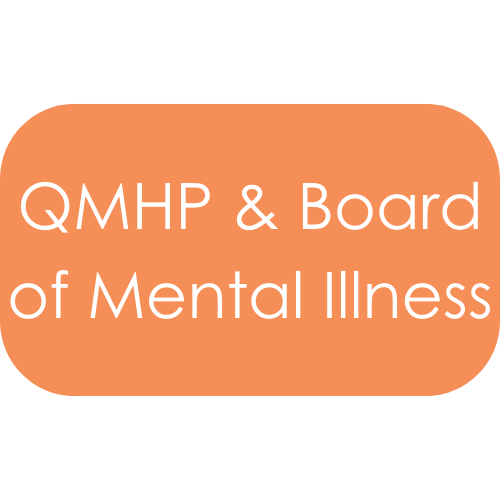







Disaster Response Resources
Faith Communities and Disaster Mental Health
The This National Disaster Interfaiths Network tip sheet provides information for religious leaders about common stress reactions people may experience in response to a disaster and suggests ways they can cope, and help others cope, with disaster stress reactions. The sheet also provides information on referring people for mental health services.
Tips & Lessons - Disaster Response: The Sunday After a Disaster
Disaster Response: The Sunday After a Disaster
This tip sheet from Episcopal Relief & Development offers advice on how to provide community and congregational support after a disaster.
This tip sheet from Episcopal Relief & Development offers advice on how to provide community and congregational support after a disaster.
Vulnerable Populations & Disaster
Vulnerable Populations & Disaster
This tip sheet discusses the need for religious leaders to accommodate the needs of vulnerable populations during disaster preparedness and response. The sheet identifies the types of vulnerable populations and illustrates preparedness and response best practices to assist individuals within these populations.
This tip sheet discusses the need for religious leaders to accommodate the needs of vulnerable populations during disaster preparedness and response. The sheet identifies the types of vulnerable populations and illustrates preparedness and response best practices to assist individuals within these populations.
Resources for Children, Youth, Parents and Other Caregivers, and Schools:
Understanding Child Trauma
Understanding Child Trauma
This web page identifies events that children and youth may experience as traumatic, presents statistics on traumatic experiences and their effects on children and youth, lists signs of traumatic stress in children and youth of various ages, and offers tips for parents and other important adults in the lives of children and youth for helping children and youth to cope with trauma. Links to resources for more information and support are also provided.
This web page identifies events that children and youth may experience as traumatic, presents statistics on traumatic experiences and their effects on children and youth, lists signs of traumatic stress in children and youth of various ages, and offers tips for parents and other important adults in the lives of children and youth for helping children and youth to cope with trauma. Links to resources for more information and support are also provided.
Age-related Reactions to a Traumatic Event
Age-related Reactions to a Traumatic Event
In this information and tip sheet, the NCTSN provides an overview of how children and adolescents may react to natural and human-caused disasters that they experience as traumatic. It describes reactions typical within specific age ranges and offers tips for parents and other caregivers, school personnel, healthcare practitioners, and community members to help children and adolescents cope.
In this information and tip sheet, the NCTSN provides an overview of how children and adolescents may react to natural and human-caused disasters that they experience as traumatic. It describes reactions typical within specific age ranges and offers tips for parents and other caregivers, school personnel, healthcare practitioners, and community members to help children and adolescents cope.
Community Violence: Reactions and Actions in Dangerous Times
Community Violence: Reactions and Actions in Dangerous Times
This resource from the National Child Traumatic Stress Network (NCTSN) provides information on community violence, how it can affect daily lives, and what to do for support.
This resource from the National Child Traumatic Stress Network (NCTSN) provides information on community violence, how it can affect daily lives, and what to do for support.
Helping Youth After Community Trauma: Tips for Educators
Helping Youth After Community Trauma: Tips for Educators
In this 1-page tip sheet, the NCTSN identifies 10 ways in which youth may react to community traumas such as natural or human-caused disasters and suggests ways for educators to respond to these reactions and support youth in coping. The tip sheet also advises educators to find professional mental health support for youth—and for themselves—as needed.
In this 1-page tip sheet, the NCTSN identifies 10 ways in which youth may react to community traumas such as natural or human-caused disasters and suggests ways for educators to respond to these reactions and support youth in coping. The tip sheet also advises educators to find professional mental health support for youth—and for themselves—as needed.
Resources for Disaster Responders:
Psychological First Aid for First Responders: Tips for Emergency and Disaster Response Workers
Psychological First Aid for First Responders: Tips for Emergency and Disaster Response Workers
This SAMHSA tip sheet provides first responders with information on how to address people for the first time after a disaster and how to calmly communicate and promote safety.
This SAMHSA tip sheet provides first responders with information on how to address people for the first time after a disaster and how to calmly communicate and promote safety.
Tips for Disaster Responders: Preventing and Managing Stress
Tips for Disaster Responders: Preventing and Managing Stress | Spanish
This SAMHSA tip sheet helps disaster response workers prevent and manage stress. It includes strategies to help responders prepare for their assignment, use stress-reducing precautions during the assignment, and manage stress in the recovery phase of the assignment.
This SAMHSA tip sheet helps disaster response workers prevent and manage stress. It includes strategies to help responders prepare for their assignment, use stress-reducing precautions during the assignment, and manage stress in the recovery phase of the assignment.
Traumatic Incident Stress: Information for Emergency Response Workers
Traumatic Incident Stress: Information for Emergency Response Workers
This CDC fact sheet outlines symptoms of traumatic incident stress and lists activities emergency response workers can do on site and at home to cope with the challenging aspects of disaster response.
This CDC fact sheet outlines symptoms of traumatic incident stress and lists activities emergency response workers can do on site and at home to cope with the challenging aspects of disaster response.
Other Links
- About
- Accreditation Information
- Behavioral Health Services Work Group
- Funding and Grant Information
- General Information
- Indigent Medication Program
- Providers
- QMHP and Board of Mental Illness
- Reports and Data
- Resources
- Services
- State Inpatient Behavioral Health
(Human Services Center)
Affiliate Websites
- Anyone. Everyone.
- Avoid Opioid
- BeThe1SD
- One Pill Can Kill
- OnTrackSD
- Stronger Families Together
- South Dakota Suicide Prevention
- 605 Strong


